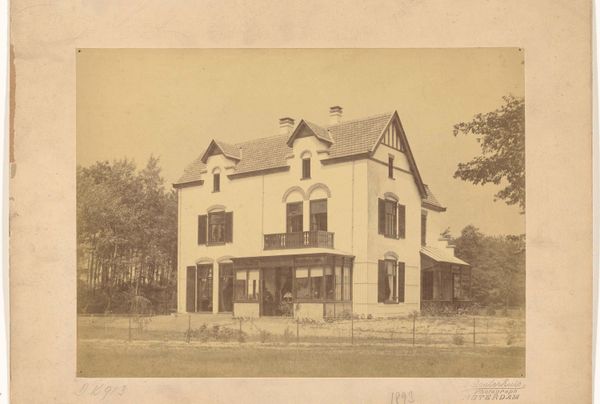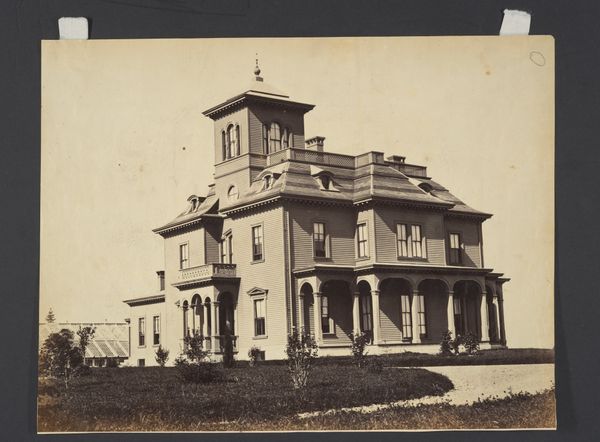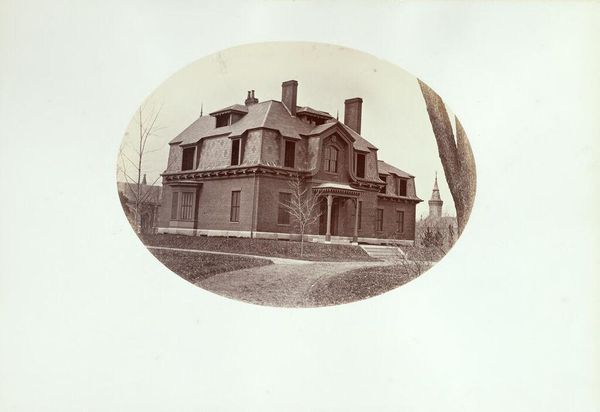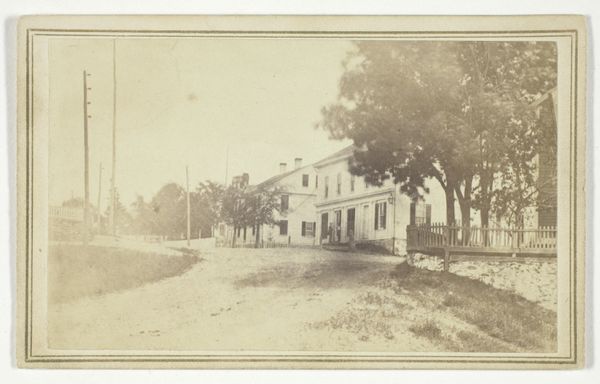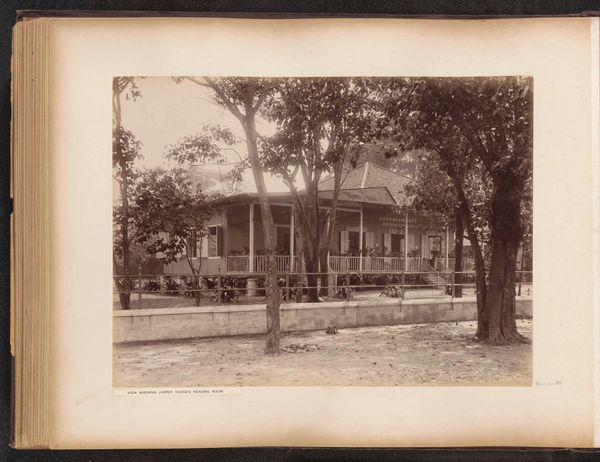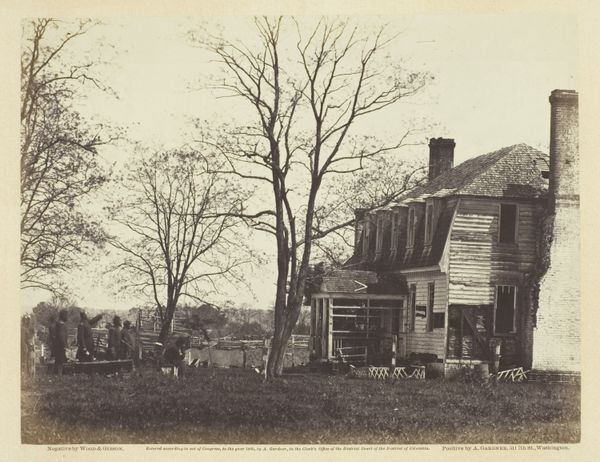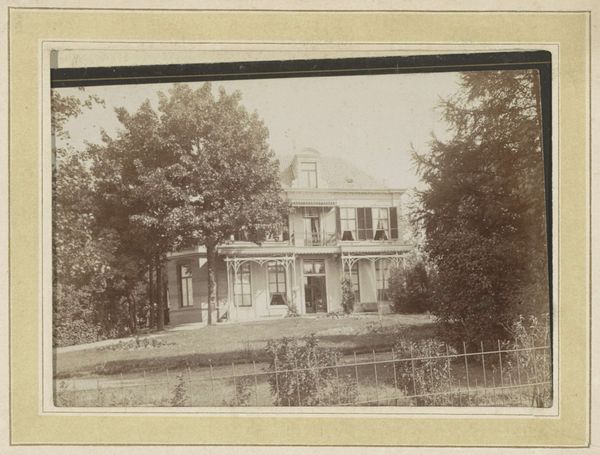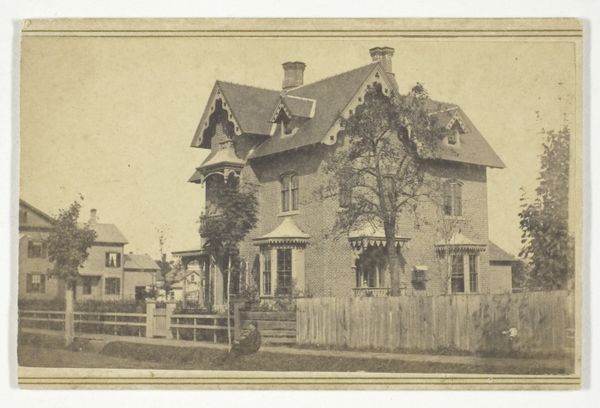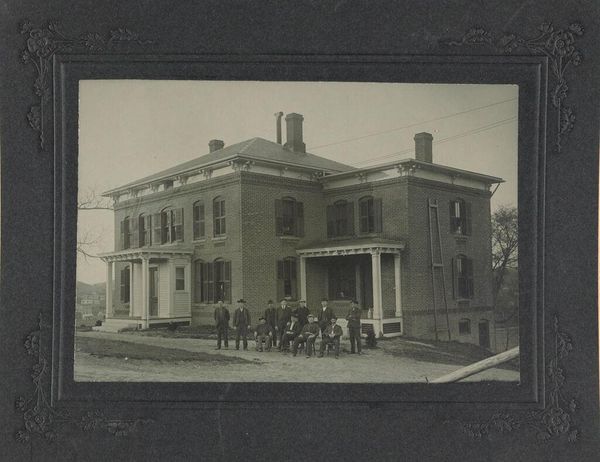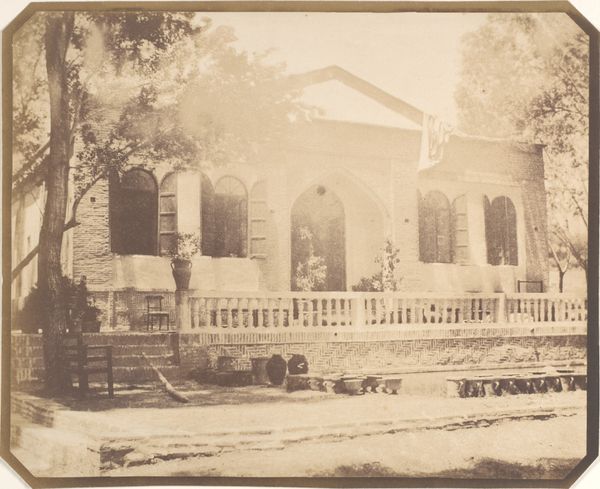
silver, print, photography, site-specific, albumen-print
#
16_19th-century
#
silver
#
photo restoration
# print
#
war
#
landscape
#
photography
#
site-specific
#
19th century
#
men
#
united-states
#
albumen-print
Dimensions: 25.6 × 36 cm (image/paper); 51 × 50.9 cm (album page)
Copyright: Public Domain
Curator: I am immediately drawn to the somber mood, a quality that permeates this landscape. Editor: Today we’re examining “The Potter House Atlanta,” a haunting albumen print captured by George N. Barnard in 1864. The Art Institute of Chicago holds this important work. Curator: Yes, the texture is fascinating, the matte surface absorbing the light in such a way that the damaged facade and the fallen trees in the foreground carry such weight, they create a dialogue between presence and absence, the materiality itself speaking to ruin and resilience. Editor: Barnard’s photographic work offers a poignant look into the material and human cost of war. What looks like bullet holes pockmarks the facade and speak to the destructive reality that befell this city. It also acts as an important primary document in viewing the lived environments during wartime. The devastation speaks volumes about labor exploitation and resources. Curator: Notice, too, the compositional choices at play here. The house is placed almost centrally within the frame, acting as a visual anchor. The desaturated palette of the albumen print enhances the structural decay while emphasizing the symbolic weight of this particular house. Editor: Indeed, but considering albumen prints were developed through labor-intensive processes, involving coating paper with egg whites, which created that glossy surface we typically see...here that’s countered. Barnard’s artistic choices are heightened because this glossy process shows the stark reality of war. It highlights a direct correlation to labor practices of war. Curator: The seemingly artless capture—almost documentary in style—lends it authenticity. Barnard captured an atrocity; not obscured by sentimentality. The very method of creation emphasizes how history shapes visual forms. Editor: Perhaps. What stands out to me is the accessibility provided by photographic evidence; making the ramifications of conflict that much more immediate. The process, the craft, and the context it provides all build together. Curator: A compelling point, underlining the layered effect of meaning. I think our analyses highlight the richness of considering this photograph in multiple, but equally valid, perspectives. Editor: Agreed, from its materiality and construction to the image’s effect, a thorough exploration unveils multiple narratives—a valuable glimpse into the realities of the Civil War.
Comments
No comments
Be the first to comment and join the conversation on the ultimate creative platform.

